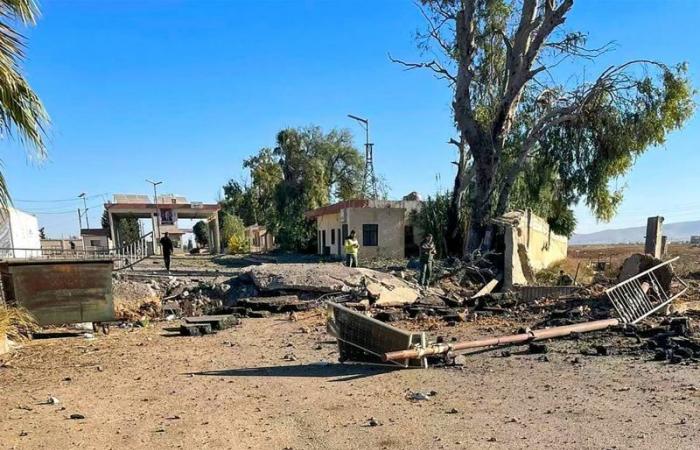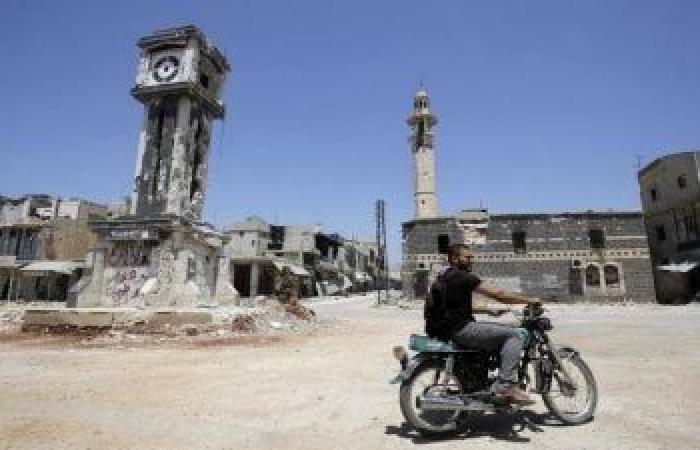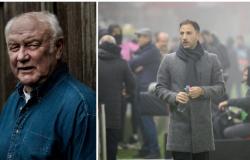It’s a name that comes up often, that we regularly read in the news. Since the start of the war in Gaza on October 7, 2023, which became that of Lebanon the next day due to the involvement of Hezbollah, Qousseir has been in the news. In western Syria, located about ten kilometers from the border with Lebanon, this town, nicknamed “the backyard of Hezbollah” by the Syrian Observatory for Human Rights (OSDH), is periodically the target of Israeli strikes, but also the subject of the wildest rumors about the personalities who are there, proof of its strategic importance. But to understand the extent of it, we have to go back a few years…
A founding battle
In 2013, while the civil war had been tearing Syria apart for two years, the city of Qousseir was the scene of a military battle. For two weeks, from May 19 to June 5, the rebels of the Free Syrian Army, the main armed force opposing the regime of Bashar el-Assad, confronted the Syrian army and Hezbollah. The stakes are high: everyone is fighting to take control of the city. This is because the location of Qousseir is strategic: it is a real logistics corridor. The main road linking Damascus, the Syrian capital, to the port of Tartous, the country’s second largest, passes through it. Qousseir is also the main crossing point for reinforcements in arms and fighters coming from Lebanon, on the border with the Bekaa valley.
For the record
Salim Ayache, one of Rafic Hariri’s assassins, reportedly killed in Syria
Hezbollah’s first offensive operation in urban combat, the number of soldiers it engages in the battle of Qousseir is not unanimous: from one source to another, there are between 1,700 and 7,000 party men. Shi’ite. These are supervised by members of the Iranian Islamic Revolutionary Guards; the one who directs operations during the battle is none other than Iranian general Kassem Soleimani. It was during this battle that the Secretary General of Hezbollah, Hassan Nasrallah, officially recognized that military executives of his party were fighting in Syria, clearly showing the support of the Shiite formation for the regime of Bashar al-Assad. On June 5, after two weeks of fighting described as the most violent for Hezbollah since the war against Israel in 2006, Qousseir was once again in the hands of the regime; it then remained controlled by Hezbollah, to the point that it organized a major military parade there on November 13, 2016.
Targets and rumors
Eight years later, to the day, on November 13, 2024, an Israeli raid targets the region: it has been several months since the war between Israel and Hezbollah extended into Syria, and particularly into Qousseir. Because the Jewish state wants to reach the Shiite party wherever it is. That day, bridges and roads were targeted: the strikes put infrastructure out of service, says a military source to the Syrian agency SANA. For its part, the OSDH also speaks of checkpoints by the Syrian security forces, indicating that this strike is the 28th since September 26. The organization notes “a major escalation in the targeting of this area” and counts more than fifty military deaths in the Qousseir region alone. For the Israeli army, this involves targeting “smuggling routes between Lebanon and Syria”, while accusing Hezbollah of using them to transit weapons.
For the record
Ten dead in Israeli strikes against “Hezbollah” infrastructure in Qousseir
The objective of the Israeli strikes on Qousseir is not only to slow down trade between the two countries, but also to target people. A few days ago, in the context of the latest bombings, the rumor grew: Abdel Karim Nasrallah, the father of Hassan Nasrallah, assassinated by the Israeli army on September 27 in the southern suburbs of Beirut, would have been killed in Syria, and more precisely in Qousseir. OSDH director Rami Abdel Rahmane quickly denied it, saying that “this is part of the media war”. Before that, various sources reported the death of Salim Ayache, one of those responsible for the assassination of Rafic Hariri, former Lebanese Prime Minister, on February 14, 2005 in the heart of Beirut, also in Qousseir. “We do not have precise information on this subject,” adds the director of the organization.
Since September 23, the intensification of the conflict in South Lebanon and the Bekaa has pushed more than 500,000 people, mostly Syrians but also Lebanese, to flee Lebanon to take refuge in Syria, according to the Lebanese authorities. A Syrian officer at the border, quoted by The Nationalindicated that more than 90,000 Syrians and Lebanese had traveled from Lebanon to Syria in the last week of September alone. These returns have sometimes turned into drama, as recently reported by the Syrian opposition media Zaman al-Wasl : Mahmoud Hassan al-Hassan, a refugee in Lebanon since 2013 and returning to his village of Saqirjah in the Qousseir district, found his house occupied by members of the Syrian regime forces. For demanding that it be returned to him, he was shot.
It’s a name that comes up often, that we regularly read in the news. Since the start of the war in Gaza on October 7, 2023, which became that of Lebanon the next day due to the involvement of Hezbollah, Qousseir has been in the news. In western Syria, located about ten kilometers from the border with Lebanon, this city, nicknamed “the backyard of…
- -






